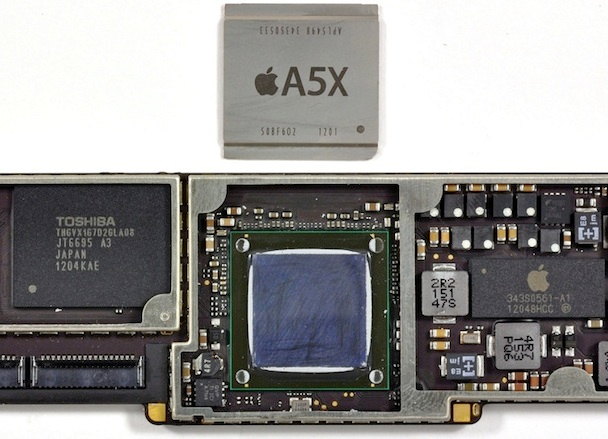The problem is in the execution and the application of the benchmarks used to get the performance numbers. On the one hand we are hearing that the Tegra 3 is capable of 1 Multiply + Add functions per core or 12 per clock. We asked nVidia about this and were told that they have never formally released this information on the Tegra 3. Now that does not mean that it is incorrect. There are ways to dig down and identify this, but we have not been able to find out exactly how the number of 12 was arrived at unless someone was making the assumption that the GPU on the Tegra 3 was identical to the one on the Tegra 2. On the other hand, the SGX 543MP2 is listed as having 32 MADs per clock. This comes from the fact that each SGX 543 “core” has four Universal Scalable Shader Engines (USSE2). Each of these has an ALU that can handle 4 MADs per clock. This means that even a single SGX 543 can put out 16 MADs per clock. The MP2 on the iPad 2 is technically capable of 16 MADs per clock. When running at its stock speed of 250MHz that is 16 GFLOPs (if you count each MAD as two FLOPs). Now the MP4 should be theoretically capable of twice that at the same 250MHz clock speed.
Where things break down is in the math used for the Tegra 3. We have seen numbers claiming 12GFLOPs, but that is if and only if these are idnetical to the ones in the Tegra2 and if that fifth core in the SoC is not involved (nVidia has hinted it might be).. Let’s continue with the one MAD per core, per clock. That is 12 per clock for the Tegra 3. At its base speed of 333MHz that is 7.992 GFLOPs when you clock it up to its full speed it is 12 GFLOPs so this could be how they are arriving at this number. The problem is that no one knows the number of MADs per clock on each shader core on the Tegra 3. Using what is on the Tegra 2 is doing something that engineers call a WAG (Wild Ass Guess). Sure it is possible that the shader cores on the Tegra 3 can only do 1 MAD per clock, but that is not certain.
What does all this break down to? It is simply that most of the claims about the A5X’s superiority to the Tegra 3 cannot be confirmed. They are using flawed math and possibly incorrect information to get to these numbers. Although we cannot say for certain if the Tegra 3 can only perform one MAD per core, per clock we have a feeling that is not the case. After all nVidia was very quick to move past the Tegra 2 and the information we have about it is because of some of its graphical limitations. We have seen the Tegra 3 in action on a 1920x1080 screen and it was pretty impressive to be perfectly honest. We are truly looking forward to seeing what the real scores are now that the “New iPad” out. Unfortunately we will not be picking one up as to be honest no one here at the site sees it as worth the upgrade (even my wife… who loves her iPhone 4S and iPad 2). We may see if anyone we know is getting one that we can test out for a couple of days and will let you know. We will be getting a Transformer Prime one way or another though and will be sure to let you know how it performs once we have it in the lab.
For now, take the numbers, comparisons and other articles out there with a grain of salt until there are Apples to Apple comparisons, which are very unlikely to happen.
Photo Credit iFixIT
Discuss this in our Forum
Editorials
More "New" iPad Hype hits the Internet; Fuzzy Logic and WAGs ahead...
- Details
- By Sean Kalinich
- Hits: 3166
 There are more claims showing that the “New” iPad is more powerful than the Tegra 3. This time they are using some very interesting evidence to show this off. One site in question is claiming that they are able to calculate the difference using the benchmarks from the iPad2. Now some of you might be thinking that this could be true since the iPad and the “new” iPad share the same base GPU core. Both have Power VR SGX 543 GPUs inside. The iPad 2 had a dual core SGX 543MP2 and the New iPad has the quad-core SGX 543MP4.
There are more claims showing that the “New” iPad is more powerful than the Tegra 3. This time they are using some very interesting evidence to show this off. One site in question is claiming that they are able to calculate the difference using the benchmarks from the iPad2. Now some of you might be thinking that this could be true since the iPad and the “new” iPad share the same base GPU core. Both have Power VR SGX 543 GPUs inside. The iPad 2 had a dual core SGX 543MP2 and the New iPad has the quad-core SGX 543MP4.



